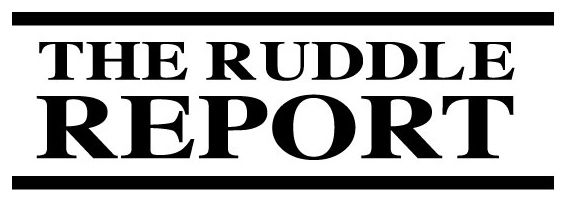
Working Length: The Pitfalls of Working Short & The Box Preparation
Today’s lesson, today’s commentary, if you will, today’s controversy will be on Working Length. Obviously when you mention working length it reminds me of the old expression, "Who you are is where you were when". What that means is – We’re all products of the schools we went to and were educated by, the instructors that we listened to closely and that motivated us to be the best we could be, and then, of course, we get out and we go to CE classes and we’re further influenced by what we read in trade articles or peer review journals. We occasionally will then buy DVDs and CDs and further visually watch techniques and all this together, your friends you talk to, the chat rooms you go to on websites, all this together goes into a big pot and you stir it and it is who you are about endodontics. If you will, it would be your paradigm on endodontics. Of course, we all have a paradigm or a belief system about working length. So, working length is perhaps a little bit controversial but I’d like to make it very logical and I’d like to take a lot of the mystery out of it.
Why do we work short of the full actual canal length? We probably should talk just a little bit, quickly, about the anatomy so that we have some reference points but most of us were taught that the vertical extent of treatment should terminate at the cementodentinal junction. Well, if we talk about the cementodentinal junction we all understand, if you’re a histologist working on a bench in a laboratory, this is an actual landmark. This landmark though, is unachievable to a clinician in the field even with apex locators.
Let me make my point. The cementodentinal junction varies from root to root. It varies from root to root even on multi-canal teeth. It varies from wall to wall within the same canal. So, we have a lot of variation of this landmark that we’re told to work to. Because of that, the tendency has been in academics to teach colleagues like myself and you, to teach us to work to some arbitrary short position taking into account perhaps 10s of 1000s of sections that have been looked at over the years and reported in the literature and so we’re working off of averages. But, when you have a patient in your chair, that patient shouldn’t be treated like an average or a cookie cutter, we should work specifically to their case and the requirements that their case suggests that we do to fulfill the mechanical requirements of endodontics.
So, fortunately, I was influenced by Dr. Herb Schilder and Dr. Schilder taught us to work to the radiographic terminus, the RT. When we work to the RT everybody needs to understand the file is minutely long, it is slightly beyond, if you will, the cementodentinal junction. The CDJ has also been called the minor constriction. It’s also been alluded to as the working width at the end of the canal, WW, working width. It’s had all kinds of ways it’s been described, but really, when you’re sitting there chairside you only really have about 3 or 4 ideas to nail down this very precise spot. You have your radiographs but those are two-dimensional pictures of three-dimensional objects, so there are some limitations.
We have apex locators and electronic apex locators have more profoundly brought accuracy to a higher level. At another time I will talk about apex locators and how all that works. So, apex locators are an important concept for nailing down the vertical extent of treatment.
If you have a shaped canal the game is over, you’ve already done all of your work, but we can use paper point drying techniques to further understand any discrepancy between what I’m going to call the physiologic terminus, the PT, and the radiographic terminus. Let me explain the radiographic terminus again. If you look at a well-angulated working film, you would see a file positioned at the edge of the root. It would be exactly even with the periodontal ligament space as it approximates the root end. Okay. So we know that’s long and if we extracted the tooth, you would see a millimeter of the file perhaps beyond the end of the actual foramen.
Now, what I’m going to talk about now is how most of us were all taught and this is the problem. Generations of us have been taught to work to the cementodentinal junction. This point has been arbitrarily taught to be somewhere between… anywhere between a millimeter and two millimeters short of the radiographic terminus. Obviously, if you think about my earlier comment, the cementodentinal junction varies from wall to wall even within the same canal; plenty of research has shown that you can find cementum crawling up on one wall, sometimes 3mm and 4mm inside the canal. So, arbitrarily working to this point, is in my mind, uncalled for and it just promotes a lot of problems like blocked canals, ledged canals and sometimes even perforations.
Here’s how it happens: Let’s say for an example, you’re trained to work 1mm short. So, you begin your procedure, conscientiously carrying small instruments, 1mm short. Over a little bit of time, and going through a series of progressively larger instruments at D0, the diameter at the end of the file, 10, 15, 20, 25, 30, suddenly you’ll notice that your rubber stop isn’t quite down adjacent to the reference point like it was on the first file that was 1mm short. What’s happening is the instruments are doing work. As the instruments meet dentin, the byproduct is mud and the fatal flaw in clinical endodontics is the production and management of dentine mud. So, this mud accumulates. The bigger files tend to compact it down and compress it and we already have a blocked canal.
Now, the colleagues in academics that advocate these box preparations, so I’m using the word "box preparations". They want you to make a big box, 1mm short of the full working length or what I would consider the full working length. So, all of the sudden, the blocked canal becomes a ledged canal. Now you notice that your last master file to length is shorter than 1mm, maybe it’s now even 2mm back and now you’re thinking... I need to make a little adjustment here. I need to be able to get back down to 1mm so I can fit my cone 1mm short.
The things you have to overcome are, you have a blocked and ledged canal. These are very difficult clinical nuisances. Sometimes they are just minor nuisances and can be overcome rapidly but oftentimes the canal is absolutely forever blocked and the ledge cannot be removed. So, it’s very hard to adjust working length.
You know, recently I was flying in a plane and I was talking to a pilot that was sitting adjacent to me. We were talking about flying because that’s what he does for a living. During the course of our conversation he mentioned that planes are off course 99% of the time. I looked at him a little bit tongue-in-cheek and said, "So how do we ever arrive?" He said, "It’s always about constant adjustments". So, either electronically or through the computer or by pilot, the adjustments allow the plane to travel enormous distances and you can pop out of the sky and land in Mumbai, India, a half a world away and hit a little strand of concrete and that’s your glide path and you safely land.
Well, we’re off course 99% of the time when we do endodontics and the key on this is patency files. You want to carry a small, flexible instrument to the radiographic terminus recognizing the instrument is minutely long. But, importantly, the canal is not blocked. Then, we’re going to create a tapered prep that is uniformly tapered from the radiographic terminus up to the orifice. These fully tapered and shaped canals can be discovered easily through just carrying instruments to the RT. Not your 20, your 25, your 30 and your 35; this would be needless over-enlargement and we’d probably see transportations, post-operative problems, flare-ups and exacerbations. I’m talking about smooth, tapered preps that terminate at the edge of the root.
Now, when you go to dry your canal with a paper point, that part of the paper point that is consistently dry, is that part of the paper point that’s confined inside of the root canal space. The part of the paper point that is wet represents that part of the paper point that is beyond the physiologic terminus. So, I’m making a big point about radiographic terminus, RT, physiologic terminus, PT, and understand they're different points inside a root canal. These points are just things we talk about but we shouldn’t get overly concerned about them. It’s more important that you have a smooth, evenly tapered prep because you can easily adjust your master cone by trimming it and having it fit right to the physiologic terminus where the paper points repeatedly tell you where the foramen is. Or, if you’re not reaching the desired length, you can simply use a smaller D0 cone or a smaller tapered D0 cone that will move deeper in the canal and you can adjust it accordingly.
So, what I’m basically saying: Deep box preparations are problems. It’s led to countless cases being blocked and ledged. It’s led to post-operative problems. It’s led to flare-ups and exacerbations. It’s led to needless surgeries and, regrettably, extractions. At the time of implants being considered a fairly predictable procedure, it’s sabotaging our endodontic success and oftentimes when we have these failures the colleague looks and says, "Well, I’m a millimeter short, it looks like it’s within the standard of care". What they need to realize is, in that last 1mm, there could be 2, 3, 4, 5 millimeters of untreated root canal system. We all know that the canal is most complicated towards its terminal extent. That’s where we find the bifidities, the deltas, the trifidities, and that’s where most of our divisions and curvatures exist.
So, I want to encourage you to carry small flexible files to the RT and then you can just bring your shaping instruments such that each larger shaping file beyond the one that’s your master file at length, backs out of the canal, this is called gauging and tuning. Gauging is how big is the foramen. Tuning is verifying that shape by using ISO hand files and looking at the file that was snug at length and then looking at the next successive larger D0 file, and you’d like to see each larger file back out of the canal in ½ millimeter intervals. This would let you know then that you have a smoothly tapered case.



